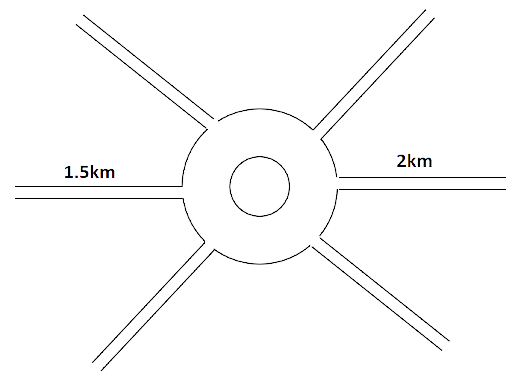NCERT Exemplar for Class 9 Science - Work and Energy - Free PDF Download
FAQs on NCERT Exemplar for Class 9 Science Chapter 11 - Work and Energy
1. How will the science NCERT exemplar for class 9 chapter 11 help me?
The class 9 exemplar is well formulated by NCERT and is designed with an aim to help students excel in exams. Some of the ways in which NCERT exemplar can help class 9 students are:
It provides a variety of questions for students to practice.
It helps students understand concepts from an examination point of view.
It also makes students capable of dealing with advanced versions of work and energy that are taught in higher classes.
It also makes students understand the pattern of questions that are asked in exams by NCERT.
NCERT exemplar boosts students' preparation for exams.
2. What kind of questions are present in the Science NCERT Exemplar of class 9 for chapter 11?
Science NCERT exemplar provides a wide range of questions to students ranging from easy to difficult level. Class 9 chapter 11 of science present in NCERT exemplar contains multiple-choice questions (MCQs), short answer questions, and long answer questions. There are a total of 26 questions present in the NCERT exemplar, out of which, 9 are multiple-choice type questions, 11 are short answer questions and 8 are long answer questions. The questions given in NCERT Exemplar for class 9 science helps to prepare for the exams.
3. What are the topics covered in the science NCERT exemplar mainly in chapter 10?
There are different topics covered in the class 9 science chapter 11. All topics are important for class 9 science students. The science NCERT exemplar contains the most important topics of chapter 11, that is, work and energy. The topics included in the exemplar are:
Concept of work
Work done by a constant force
Energy, its forms, and unit
Kinetic energy and its associated numerical
Potential energy and its associated numerical
Laws of conservation of energy
Rate of doing work
4. On which parts of chapter 11 are the short answer questions and long answer questions in the science NCERT exemplar of class 9 mainly focuses on?
The multiple-choice questions in the NCERT exemplar mainly focus on factual questions on force, displacement, kinetic energy, acceleration, and SI units. Short answer questions focus on areas related to numerical that will enhance students' quantitative skills. Long answer questions of the exemplar are also numerical questions related to energy, work, and power that enhance not only quantitative but also logical skills of students. Students must read all topics carefully to understand the topics given in chapter 11 for class 9.
5. What will be the output of studying chapter 11 of the class 9 science from the NCERT Exemplar?
By studying chapter 11 of class 9 from the NCERT Exemplar, that is, work and energy from the class 9 science syllabus, it provides students with an idea about the concept of work and energy. It also gives them insight into kinetic energy and possible energy and the formulas related to them. Another important outcome of the chapter will be the delivery of the most basic concept of the law of conservation of energy and the rate of doing work.






































